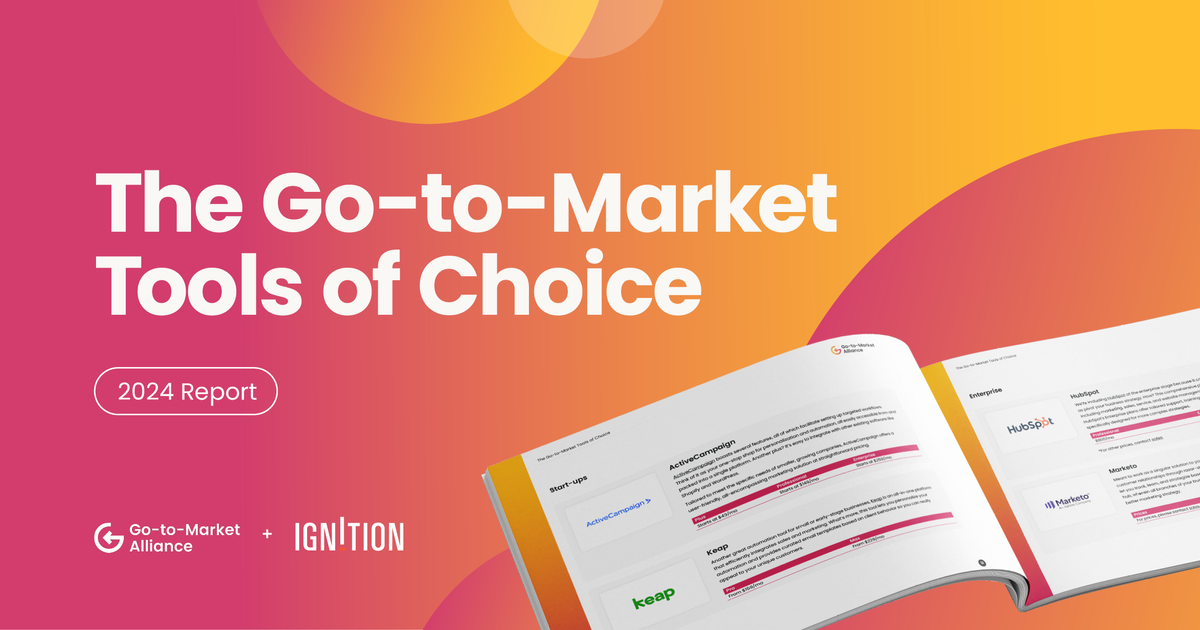Artificial intelligence has already revolutionized modes of working across various industries. It’s an indispensable tool for many, whether in sales or marketing, and will continue to grow as more and more teams involve AI throughout their strategies and processes.
It’s only natural, then, that organizations are wondering how to operate amidst such rapid technological advancements. Whether a business is ready to bring on board a big shift (such as integrating AI and specialists across the board) remains unanswered.
That’s not to say AI hasn’t redefined business and could empower your team to grow in creative and - yes - even human ways.
This article covers:
How to encourage your teams to adopt AI
Though AI has developed tremendously and led the way for new roles to be created, there’s no telling whether or not this relates to companies having to hire AI specialists in the future. With the right onboarding, training, and exposure, many of us can reap the benefits of AI.
Given that there’s still some hesitation surrounding the use of AI, we understand that it’s tricky to know how to strike the right balance. After all, job displacement is a big fear. But there’s nothing as unique as being human; AI tools cannot replace that.
One way to encourage your teammates to keep an open mind is to teach them how to make use of the many AI tools out there today.
Integrate user-friendly tools
User adoption depends on usability.
User-friendly tools are likely a better option when first introducing AI into your teams. Get your team used to it, and gather feedback to see what’s worked. This way, you’re also showing your team they don’t necessarily need to be specialists to understand and use AI.
Lead with the benefits
Sometimes your team can be resistant to change simply because they don’t understand it.
Highlight the benefits of using AI within their workflows, the improved efficiency, less repetitive tasks, and more time for strategic work (that an AI can’t mimic). By leading with how AI can make your team’s job easier they’ll be more open to having a go.
“I think focusing on how AI can remove the mundane, more reactive tasks of a CS on a daily basis, allowing them to focus on the proactive, more strategic engagements with our customers is a great way to combat hesitation or fear around using the resource.
“Much of what AI will do for us is free up existing reps' time for more important work, more deep work, and for this reason, we have not seen much pushback to date.”
– Brian Grogan, MSW, MBA, Principal GTM Operations at HUMAN
“For me, it's all about business results, job impact, and business impact.
“If you can show someone how to complete their usual workflow - which might take an hour, days, or even weeks - in just five minutes, they will usually listen to you.
“There are many tasks we do on a daily basis that are process-focused and somewhat tedious. If we can delegate these to an AI tool, we can then focus on more strategic and meaningful aspects of our work.”
– Jonathan Kvarfordt, Founder at GTM AI Academy, Head of GTM Revenue Enablement and Product Marketing at Simetrik

Provide expert-level training sessions
If that’s working and you notice enthusiasm’s picked up, keep the momentum going.
Whether through hosting expert-level training sessions or promoting cross-collaboration, encouraging your team to stay educated on the topic of AI will likely help them develop the necessary skills.
“For teams, I think there’s no option other than to mandate use. Offer training, but make it compulsory to use AI in workflow. Management has to take the lead and deploy new ways of working.”
– Zohe Mustafa, Fractional CMO / CTO / CGO, Founder at Hakka
Enable cross-collaboration
What’s more, by enabling cross-collaboration amongst different teams, you also give them access to your organization’s collective ability.
At the center of any cross-collaborative effort lies the belief that you can’t possibly know everything.
Nevertheless, that much-needed guidance from your knowledgeable colleagues means you can successfully try your hand at different tasks across different branches of your organization. Tackle AI the same way.
“First of all, within the company, we created a common community for sharing experiences and use cases of AI in various areas of marketing and product.
“This helped find cross-team solutions to improve quality and accelerate work. The identified use cases then underwent testing in real processes. Some took root and now help solve problems in the workflow.”
– Aleksandr Seygarov, Product Marketing Manager at Space307

Practice makes perfect
From there, the next step is to get your team to build confidence by practicing.
This can happen with any AI tool that suits your team-wide goals. Giving individuals the space to try, fail, reassess, and succeed is the best way to make them comfortable with anything novel or unknown.
If your team uses your AI tools of choice every single day, they’ll be specialists in their own right.
“Companies should encourage employees to use AI, but signing up for free trials of random AI platforms can put company information at risk. Having a closed system has allowed us to develop new products, enhance GTM efforts, and learn about AI without worry about misuse of our data.”
– Anne Hunter, Senior Vice President (B2B Products and Go-to-Market) at Ipsos.
How to choose the right AI tools for your team
The answer to this depends on a few things: whether or not you have the budget, whether you have the resources to train and retrain team members, if the tool truly addresses the problem at hand, and if you absolutely need this tool to stay ahead.
In all truth, approach this problem the same way you would when looking to hire a new person or change platforms to suit your organization’s goals better. Ultimately, the goal should be to improve and establish new modes of working.
Factors to consider when selecting a new AI platform
It might be tempting to try and implement as many AI tools as possible, but this could prove inefficient and costly.
For example, rather than over-implementing, one option is to take a platform approach and implement one AI tool that supports multiple use cases within your contextualized model, such as Ignition.
Another way to avoid having too many tools is to look at your current stack and establish which areas of your business could benefit from AI tech.
Once you’ve done this, you can start looking at and evaluating your options by considering what’s available in the market. It might be worth looking for a product or service that aligns with your company ethos. For example, this could look like sourcing a provider who values data protection or enforces strict regulations.
Another way to find the right tool it look at how skilled your team is, as this can tell you whether a certain tool is a sensible investment or not. You’d ideally want to cut down on costs and ensure resources are utilized at the time of introducing the new software.
Bear in mind that these variables might look different case by case. You have to always take into consideration your company's needs. From there, you can trial and adopt a tool that suits you and is useful to your team, organization, and audience.

Examples from the experts
“One pitfall to consider with AI tools is that there is a vast number of them out there. It's hard to keep up with all these tools, and it's easy to become overwhelmed or get “shiny object syndrome.”
“I would say keep it simple.
“Look at basic tools like ChatGPT that can cover a variety of use cases to help people. Make sure you are aware of what's out there. If you do pick another tool, choose the best one based on your workflow.”
– Jonathan Kvarfordt, Founder at GTM AI Academy, Head of GTM Revenue Enablement and Product Marketing at Simetrik
“To set the stage, within our firm, we found the most immediate and beneficial use for AI was within a scaled motion for customer success and account management on our lower ARR accounts.
“We have since expanded this application to our account base as a whole by exploring products like Reef.ai which can help us to identify hotspots for cancellation, missing data, and ideal expansion targets within our entire account base through a simple CRM integration.
“We also have a large number of customers that are mainly self-service at the lower ARR level and require a low-touch strategy to service them. I wanted to up-level what it meant to be a customer within this tier and provide a better experience and engagement with our firm.
“While we have not implemented it, we are looking at using AI for several key touchpoints, including creating engagement campaigns, automating the outreach process for events like renewal reminders, ABR scheduling and events reminders.”
– Brian Grogan, MSW, MBA, Principal GTM Operations at HUMAN
“I primarily use AI as a tool for research, understanding best practices in niche product launches, case study analysis, strategy development, data interpretation, and industry benchmarking. I foresee AI evolving into a foundational operational standard, acting as a guide to ensure no essential steps are overlooked in planning.
“It will likely become second nature to process business and marketing plans through ChatGPT, prompting AI to fill in gaps, predict outcomes, and provide compelling case studies for the creation of investment strategies.
“For a first step, take any part of the campaign or launch process and ask ChatGPT to suggest improvements to the plan to hit your goals, provide detailed measurement strategies, or provide audience information on your product niche, and consider using that information for targeting your ads, for example.
“And, like many others, our AI journey has predominantly involved exploring tools like ChatGPT for content generation and AI-driven art platforms for creative concepts. As these tools become more familiar, the focus is now on integrating AI into specific processes, while assessing benefits and limitations to leverage its full potential.”
– Simone Silva-Lysko, Go-to-Market Manager at MINICLIP
Craving more AI insights?
We have more where this came from in our AI for Go-To-Market playbook.
Download your copy. 👇





